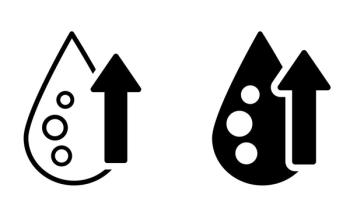
Cap on Drug Benefit Doesn't Add Up to Medicare Savings
OAKLAND, Calif. - Capping prescription drug benefits at ,000 by Medicare+ Choice plans was a pennywise and pound foolish approach to cost containment, said researchers here.
OAKLAND, Calif., May 31 ? Capping prescription drug benefits at ,000 by Medicare+Choice plans was a pennywise and pound foolish approach to cost containment, said researchers here.
An analysis of the approach found that any money saved on drugs was spent on hospitalizations and emergency department care, wrote John Hsu, M.D., of the Division of Research at Kaiser Permanente here in the June 1 issue of the New England Journal of Medicine.
What's more, Medicare patients who had a ,000 cap on prescription drugs also had a higher mortality rate than Medicare patients who had no cap on drug coverage, found Dr. Hsu and colleagues at the University of California San Francisco, Harvard School of Public Health, and the Kennedy School of Government at Harvard.
The findings emerged from a comparison of clinical and economic outcomes of 157,275 Medicare+Choice beneficiaries who had a ,000 cap on drug benefits and 41,904 Medicare beneficiaries who had unlimited drug benefits because of employer supplements. All data were from 2003.
Patients who had benefits capped had higher rates of visits to the emergency department (relative rate, 1.09; 95% confidence interval, 1.04 to 1.14), non-elective hospitalizations (relative rate 1.13; 95% confidence interval, 1.05 to 1.21), and death (3.05% versus 3.73%; difference 0.68%; 95% confidence interval, 0.30 to 1.07 percentage points; relative rate 1.22; 95% confidence interval, 1.07 to 1.38) than subjects whose benefits were not capped, found Dr. Hsu and colleagues.
Pharmacy costs were 28% lower for those with capped benefits and office visit costs were 4% lower, but hospital costs were 13% higher and emergency department costs were 9% higher. The bottom line was a 1% savings in total medical costs, which was not statistically significant.
Additional findings:
- The rate of non-adherence to antihypertensive drugs was 18.1% for patients with the ,000 cap versus a non-adherence rate of 14.6% for Medicare beneficiaries with no cap.
- The non-adherence rates for lipid-lowering drugs and antidiabetic drugs were 31.4% and 26.2% for those with capped benefits versus 26.5% and 21.2% for those with unlimited drug benefits.
- Among hypertensive patients whose drug benefits were capped, 39.5% had systolic pressures of 140 mm Hg or higher versus 38.5% of people with unlimited drug coverage.
- LDL cholesterol was 130 mg/dL or higher for 21.3% of beneficiaries with the ,000 cap and 19.6% for those with no cap.
- For diabetics, 19.7% of those with the coverage cap had glycated hemoglobin of 8% or higher versus 17% of those with unlimited coverage.
As might be expected, when "drug expenditures exceeded the cap amount, differences between the two groups in drug consumption were greater in the months after the cap was exceeded than in earlier months," the authors wrote. "There were similar trends for monthly adherence to drug therapy."
Kenneth E. Thorpe, Ph.D., of the Rollins School of Public Health at Emory University in Atlanta wrote in an accompanying editorial that the Hsu study provides "additional evidence that attempts to save money through redesign of insurance plans-involving caps on benefits and increases in out-of-pocket spending for prescription drugs-result in the delivery of poor care to chronically ill patients."
He wrote that rather than setting caps, "we need to do a better job of treating chronically ill patients. He pointed out that "more than 75% of health care spending is traced back to patients with a chronic illness. Patients who are chronically ill have long-lasting conditions that, in general, require predictable medical interventions. Although these medical interventions are well established, chronically ill patients receive only 56 percent of the recommended care each year."
In addition, he wrote "most of the increase in health care spending is associated with a rise in the prevalence of treated disease."
Such caps, Dr. Thorpe wrote, "do not even save much money," which should "encourage movement toward other approaches to the management of spending in Medicare and other health insurance programs."
Dr. Thorpe suggested that those "other approaches" might include paying physicians a monthly stipend so that "they would take the time needed to work with patients and manage their multiple chronic illnesses." Reducing health care costs, he concluded, will require "reducing barriers to treatment."
Dr. Hsu and colleagues noted that they were not able to assess out-of-system drug use "and may have underestimated total drug consumption." Moreover, they had "limited precision when evaluating cost differences between the groups." For instance, they did not detect a difference in the cost of non-elective hospitalizations even though "we found a significant difference in the rate of non-elective hospitalizations".
Finally, the data are based on 2003 Medicare+Choice plans, not on the newly inaugurated Medicare Part D prescription plan. Nonetheless, the authors suggest that the cost sharing in Part D could increase out-of-pocket costs for "retirees who currently have employer-based coverage if their employer discontinues drug coverage. Our findings suggest a need to monitor closely the effects of these new benefits and, possibly, to modify cost sharing for drugs that are effective in treating chronic diseases."
The study was funded by grants from the Agency for Healthcare Research and Quality, the National Institute on Aging, and the Alfred P. Sloan Foundation.
Newsletter
Enhance your clinical practice with the Patient Care newsletter, offering the latest evidence-based guidelines, diagnostic insights, and treatment strategies for primary care physicians.



















































































































































































































































































